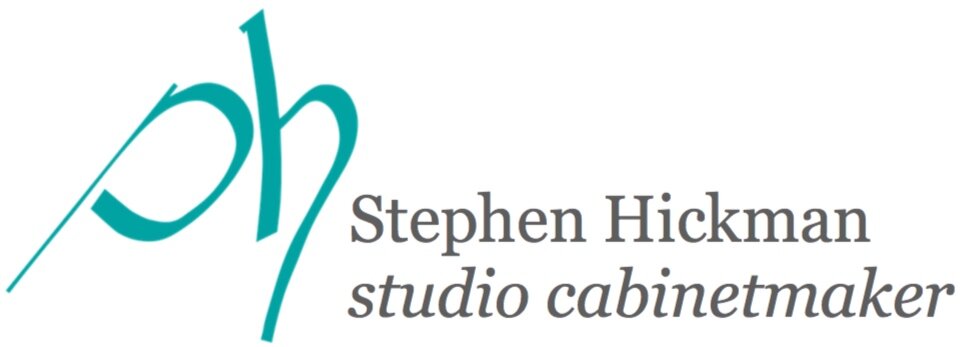Essential Toolkit 1: Planes
Flatness. Squareness. Smoothness. No twist.
These are words that make a cabinetmaker happy.
Wood, you see, is a capricious material.
It doesn’t come in lumps like clay, or billets but to specific sizes like steel.
It comes in trees.
Nature expertly delivers us the most perfect material for building our homes, but that comes with some drawbacks.
It moves as it dries.
It twists. Holds tension.
Grain goes in all sorts of opposing directions, seemingly at once.
We can, with enough skill, get this material to a perfect level of flatness. An almost glass-like smoothness on the surface.
But that takes work.
And it takes hand-planes.
A plane is essentially a sharp blade (usually called an ‘iron’) set at an angle to the wood in order to take a shaving. Usually this angle is 45°, but you can get steeper angles for tackling trickier grain.
Different plane set-ups are useful for different jobs.
You’ll need a few different planes in your essential toolkit.
No. 5 Bench Plane
If you want to work wood entirely by hand, then you’d need at least three planes. A ‘fore’ plane, to take the timber roughly to size, a ‘jointer’ plane, to make it straight and square, and a ‘smoothing’ plane to give it a final finish. However, taking timber from rough sawn to final finish by hand is hard work. Really hard work. I know, because for the first three months of my training that was what we had to do. Good idea for training. Bad idea for general practice.
For your essential toolkit, you’ll only need one bench plane.
Make it a Number 5.
It is the perfect plane.
Often referred to as a ‘Jack’ plane, the Number 5 can be pressed into service for any planing job you wish.
Need a fore plane? Open the mouth a little wider and drop in an iron with a heavily cambered blade.
Need a smoother? Do the opposite: close up the mouth and grind the iron straight, to take that polishing shaving.
My usual set-up sits somewhere in the middle of these two extremes, meaning that it is able to take a fine shaving whenever I need it to.
No. 60 1/2 Block Plane
The block plane is a one-handed plane, just over 6”in length. Many people coming into woodwork have never even seen a block plane before, but professional makers will often say it is their most-used plane.
Here are just three uses:
Running chamfers
There are many reasons why you might want to avoid setting up the router table to run a 45° chamfer. Perhaps the job is too small or the wood is prone to tear-out. The block-plane is the perfect tool for the job.
Trimming end grain
Need to trim off half-a-mil of wood to get that joint bang-on? Or take a rough-sawn end to a crisp finish? Or perhaps you need to true-up that compound angle for just the right cant on table leg. A block-plane will take care of all of these tasks with ease.
Getting a fine “off-the-tool” finish
Frequently the block plane is viewed as a rough tool, but nothing could be further from the truth. Once you get to know the tool, you can set it up to take the finest whisper of a shaving for a polished finish. The short sole of the plane means that as you take your finishing shaving you’ll retain, even improve, the flatness of you work.
No. 410 Shoulder Plane
A medium sized shoulder plane will come in very handy in all sorts of situations. This is a great size for adjusting grooves (dados) and rebates (rabbets), as well as trimming the cheeks and shoulders of mortice and tenon joints.
A couple of extra plane blades
Sharpened for the No 5 Plane, kept in the chisel roll. As I mentioned above, the ‘spectrum’ of tasks you can do with a plane goes from heavy to fine cuts. The heavier the cut, the more rounded you want the cutting end of your iron. The finer the cut, the more you want to grind your iron straight across. Having a couple of extra blades is a good idea so you can change the purpose of your plane without spending hours on the grinder.
A Cabinet Scraper
I’ll bundle this in with planes because they essentially do the same job, just without being housed in a metal body. I am quite particular about the scrapers I use. A rectangular scraper 0.6mm thick is the only one I use. The thinner ones are never quite up to the job, and the thicker ones can’t be properly bent. 0.6mm is the sweet-spot. It’ll take a great shaving, but not too thick to be used fairly comfortably for quite some time. If I am carving out flowing ribbon-shapes, I’ll use these exclusively.
And that is about it. Three planes, and a few slivers of metal. So simple.
Of course, as you develop in the craft you’ll want to explore all sorts of planes. Most woodworkers can’t resist getting a really big plane, and many hand tool aficionados are in love with Japanese planes. I am currently experiemnting with taking the blades out of old wooden planes (you know, the horrible old beech ones, all oblong and oily) and setting them in my own hand-made planes. But that is an obsession for another newsletter!
Until next time,
Stay sharp friends,
~sh
Stephen Hickman
Studio Cabinetmaker
